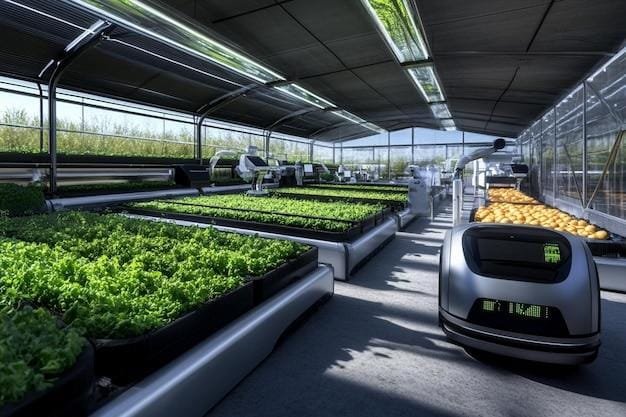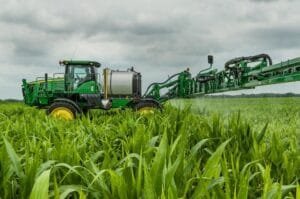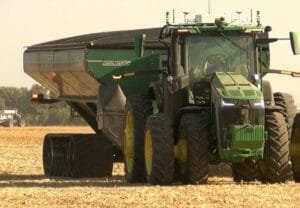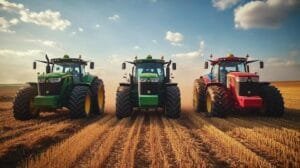A fresh wave of innovation is reshaping agricultural practices as companies introduce autonomous retrofit kits for existing tractors. Agricultural technology leaders are pushing boundaries beyond conventional automation. The transformation of standard farm machinery into self-operating equipment marks a pivotal development in modern farming techniques.
AGCO Corporation has announced plans to launch their OutRun autonomous tractor retrofit kits in 2025. These pioneering systems will enable select Fendt and John Deere tractors to function without human operators, initially focusing on grain cart and tillage operations. The compatibility across different fleet brands represents a thoughtful approach to implementation, considering many farms utilize diverse equipment collections accumulated through years.
Farmers facing labor shortages find these solutions particularly valuable. The integration process, surprisingly manageable for most mechanical systems, allows for swift conversion between traditional operation and driverless functionality. Sometimes equipment that seemed destined for replacement gains extended utility through these technological additions.
Sabanto entered the competitive landscape with their Sabanto Steward retrofit kit, officially released in October 2024. The system cleverly combines mobile application controls with mechanical interfaces that connect directly to existing tractor systems. A straightforward switch mechanism permits operators to toggle between autonomous and manual control depending on circumstantial requirements. The architecture beneath this system incorporates several essential components working in harmonic coordination:
The Vehicle Mission Control (vMC) delivers mobile application functionality where farmers can establish, supervise, and modify field operations while they happen in real-time. I think the intuitive interface represents the company’s understanding that adoption depends on accessibility factors beyond pure technical capability.
Working alongside this interface, the Vehicle Path Finding Module (vPFM) serves as the bridge connecting electronic commands with physical tractor functions. This component interfaces with steering mechanisms, power delivery systems, and hydraulic operations to execute instructions with precision.
At its foundation, the Vehicle Operating System (vOS) translates user directives into practical field movements. The software interprets complex agricultural patterns into machine-readable commands that maintain operational efficiency throughout varying field conditions.
Bluewhite offers another compelling option in the growing marketplace for autonomous retrofit solutions. Their kit boasts universal compatibility, claiming to transform regular tractors into autonomous units regardless of manufacturer or model specifications. This approach addresses the heterogeneous nature of farm equipment collections, where inherited machinery often operates alongside newer acquisitions.
The emergence of these kits signals a fundamental shift in agricultural investment strategies. Rather than committing substantial capital towards entirely new autonomous tractors, farms can enhance existing assets with considerably lower financial outlay. The decision matrix involves weighing immediate implementation costs against long-term operational benefits, while factoring depreciation schedules of current equipment.
Industry observers note that certain agricultural operations benefit more immediately from autonomous capabilities. Repetitive tasks requiring consistent precision over extended periods demonstrate the most evident advantages when converting to automation. Yet some specialized operations still demand human judgment and adaptive response capabilities that current systems cannot fully replicate.
Future Farming maintains a comprehensive catalogue of commercially available autonomous retrofit options that farmers can consult when evaluating potential systems for their specific needs. The regularly updated resource provides comparative analysis across technical specifications, compatibility ranges, and implementation requirements.
The rollout of these technologies isn’t without interesting hurdles. Fields that have poor cellular connectivity present unique challenges for systems relying on remote monitoring capabilities. Some farmers have taken to installing localized network infrastructure to overcome these limitations, creating tech-enabled islands in otherwise disconnected rural areas.
Regulatory frameworks continue evolving alongside these technological developments, with safety protocols and operational guidelines developing through collaboration between industry leaders and agricultural policy experts. The dust hasn’t settled yet on standard practices for autonomous equipment operation in shared agricultural spaces.
As these systems become increasingly mainstream, the relationship between operator and equipment undergoes subtle redefinition. The tractor transforms from tool to teammate, executing assigned tasks while the farmer’s attention shifts toward strategic planning and analysis. This evolution in farming practice represents not merely technological adoption but a conceptual shift in agricultural management philosophy.







